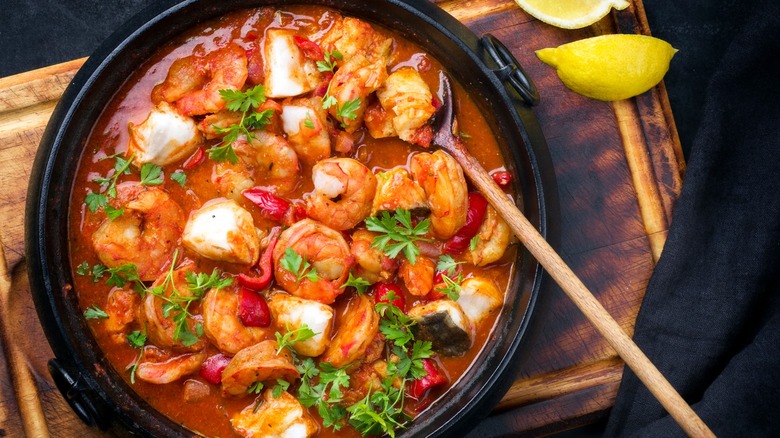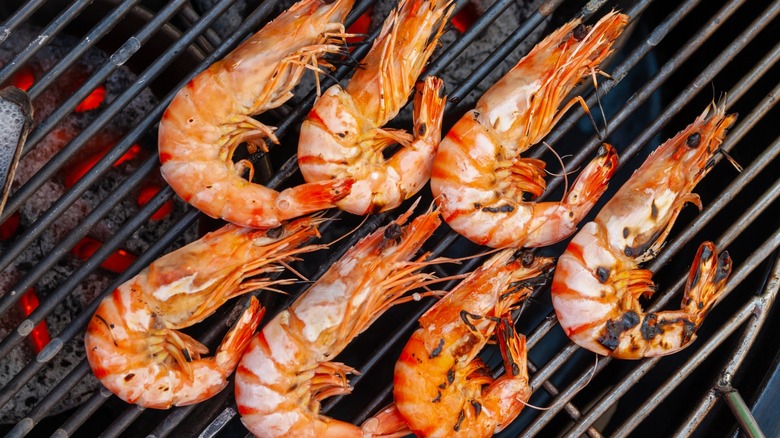The Easiest Way To Incorporate Shrimp Into Stew Is Also The Tastiest
Shrimp and the juicy melange of tender meat and veggies that make up stew are a marriage made in heaven, but as the old tradition goes, they shouldn't see each other until the big moment, or something bad is bound to happen. In this case, that moment occurs just before serving, and the bad thing is chewy, overcooked shrimp. Whether you're tucking into a Cajun-style sausage and seafood gumbo, a shrimp and okra gumbo, or even this Japanese-style dashi-braised shellfish stew by Andrew Zimmern, the basic principle is the same: It's best to grill the shrimp separately and add them to the stew at the finish. Not only is this the easiest way to incorporate shrimp into the stew, but it's the tastiest as well.
If you've ever cooked shrimp, you probably know how susceptible they are to overcooking, especially in a piping-hot stew. An overcooked shrimp is rubbery, dry, and tough — a very undesirable texture — rather than tender, juicy, and meaty. Plus, covered in the broth of a thick stew and amidst other proteins and veggies, it's harder to see the shrimp in order to look for telltale signs of doneness. It's much better to play it safe and cook them on the grill where you can watch them. And since that's how you get the best flavor for your stew anyway, it's kind of a no-brainer.
Grilling the perfect shrimp for your stew
The reason shrimp are so popular (aside from their buttery, sweet deliciousness) is because of how quickly they cook (shrimp scampi in 12 minutes, anyone?). They only take a couple of minutes on each side, but things can still go awry. The key is to keep an eye on them, and don't rely solely on color. Yes, uncooked shrimp start out translucent and gray and then turn opaque and pink or orange (subject to what type they are), but they don't change color too much between cooked and overcooked — they just get a little more white. So, you'll only get so far with that technique.
Instead, there are other methods for determining when shrimp are fully cooked: temperature and shape. The United States Department of Agriculture (USDA), recommends an internal temperature of 145 degrees Fahrenheit. But inserting a temperature gauge into a shrimp is admittedly tedious. A better method is to go by shape. As the shrimp cooks, it curls into itself. What you're looking for is a shrimp that has turned into a "C" — for "cooked." But wait too long and your shrimp's "C" will turn into an "O," as in "overcooked," or "Oh no! I ruined the shrimp."
In the case of stew, once you've determined your shrimp are done, transfer them straight from the grill, or cut them into bite-size chunks, before adding them to the rich and saucy mix. Either way, they're ready to be served.

